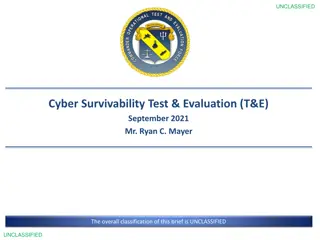The Politics of Cyber-Physical Commons: Understanding Types, Features, and Core Arguments
This discourse delves into the politics of cyber-physical commons, exploring definitions, types, features of commons-based peer production, and three core arguments - liberal, reformist, and anticapitalist perspectives. The content discusses the coexistence of commons with the state and market, transition towards post-capitalism, and autonomous development against capitalism.
Download Presentation

Please find below an Image/Link to download the presentation.
The content on the website is provided AS IS for your information and personal use only. It may not be sold, licensed, or shared on other websites without obtaining consent from the author.If you encounter any issues during the download, it is possible that the publisher has removed the file from their server.
You are allowed to download the files provided on this website for personal or commercial use, subject to the condition that they are used lawfully. All files are the property of their respective owners.
The content on the website is provided AS IS for your information and personal use only. It may not be sold, licensed, or shared on other websites without obtaining consent from the author.
E N D
Presentation Transcript
THE POLITICS OF CYBER- PHYSICAL COMMONS Vangelis Papadimitropoulos Dr of Political Theory Author of: -The Commons: Economic Alternatives in the Digital Age -On the Contradictions of Cyber-Physical Commons (forthcoming)
DEFINITION AND TYPES OF COMMONS The commons consist of distributed or common property resources/infrastructures (natural resources, technology, knowledge, capital, culture), self-managed by user communities in accordance with collectively established rules or norms (Bauwens et al., 2019; Bollier and Helfrich, 2015). The commons are made up of three elementary components: (1) a resource; (2) a community; and (3) a commoning activity (Bollier and Helfrich, 2015; De Angelis, 2017). Two main types of commons: local (rural, urban) ex. community agriculture (local/rural), housing associations (local/urban) global (knowledge and information) commons ex. wikipedia (global), fablabs (glocal)
THE FEATURES OF COMMONS-BASED PEER PRODUCTION decentralization, democratic self-governance, meritocratic participation (do-ocracy), distribution of value the centrality of non-monetary motivations: voluntarism, activism, ideology, preferences, the joy of entertainment, the pleasure of creativity monetary motivations (Benkler 2006) the permeation of firm and state boundaries holoptism, equipotentiality and stigmergy (asynchronous, indirect collaboration/production) modularity, granularity (small modules) (Bauwens 2015) sustainability and resilience circular economy, waste management, eco-efficiency, clean energy (Bollier 2012;Bauwens and Kostakis 2014)
THREE CORE ARGUMENTS Liberal (Ostrom, Benkler, Lessig) coexistence of the Commons with the state and market operation 1. 2. Reformist (Bollier and Helfrich, Bauwens and Kostakis, Arvidsson and Peitersen, Rifkin, Scholz, Rushkoff, Erik Olin Wright) Commons transition towards post-capitalism through hybrid entrepreneurial models, platform cooperativism, open cooperativism among the Commons, ethical market entities (friendly capital) and a partner state 3. Anticapitalist (Hardt and Negri, Dardot and Laval, Kioupkiolis, Gibson and Graham, Dyer- Witherford, De Angelis, Caffentzis, Federici, Rigi, Meretz, Harvey, Dean, Fuchs, Zizek) autonomous development of the Commons against and beyond capitalism Autonomous Marxists, Anarchists (advocate the autonomy of the Commons (emphasize the role of the socialist state vis- -vis the state and the capitalist firm) Statist Neo-Marxists and the political Left)
THE CONTRADICTIONS OF THE COMMONS The liberal argument limits the commons to a third institutional axis of civil society coexistent with the state and the market. It does not question nor challenge the contradictions of capitalism and the state, that is, the power asymmetry between directors and executants, managers and workers, capital and labor, elites and the people. Reformist/post-capitalist accounts of the commons cannot but encounter the same contradictions from a different angle: commerciality vs non-commerciality competition vs cooperation private vs common property exchange vs use value centralisation vs decentralisation exclusion vs inclusion individuality vs communality localism vs globalism fragmentation vs scale Both the reformist/post-capitalist and the anti-capitalist argument lack a holistic coordination mechanism necessary to scale the commons to become the dominant socio-economic model vis- -vis the state-market nexus. Eventually, they cannot secure the economic sustainability of the commons, therefore not being able to reach a critical mass.
BLOCKCHAIN: A CONTESTED COMMONS Blockchain as a new form of digital commons (FLOSS, DAOs, DApps) Main trends/approaches: Crypto-libertarianism right-wing neoclassical economics Crypto-liberalism centre, left-wing neoclassical economics Neo-institutionalism (Ostrom School) neo-institutional economics Crypto-commonism heterodox economics (neo-institutional, evolutionary, post-Marxist economics)
Neoclassical economics Commons-based economics Self-interest, individualism Diversity of motivations Information asymmetry, privacy Openness, sharing, holoptism (transparency) Competition (zero-sum game) Cooperation (win-win game) Hierarchy Self-organisation Scarcity Abundance when possible Supply and demand price signals Open supply chains, circular economy Centralised R&D decentralized coordination via modularity and granularity Division of labour Stigmergy, equipotentiality Salaries Open value accounting Profit maximization for shareholders Distribution of value among stakeholders Negative externalities Internalisation of externalities (sustainability, recognition of social reproduction, affect, care)
CRYPTO-LIBERTARIANS VS CRYPTO- COMMONERS Crypto-libertarians > anarcho-capitalists Individualistic profit-driven perspective Profit is central Crypto-commoners > post-capitalists Commonist purpose-driven perspective Profit is peripheral
LIBERTARIANISM vs ANARCHISM Crypto-libertarians: individualist approach to human interaction (self-interested utility maximizer) a capitalist approach to economic organization (hierarchy, privacy, profit maximization) a market-based approach to governance (supply and demand) Crypto-commonists: a collectivist view of social interaction (openness, sharing, solidarity, transparency) a commonist approach to economic organization (equitable distribution of value) a democratic approach to governance (self-organization) Whereas crypto-libertarians consider the invisible hand of the free market to be the privileged agent driving the trustless technology of Blockchain on the principles of neoclassical economics, crypto-commonists regard the Blockchain as a trust-enabling technology that could facilitate democracy on the principles of the commons.
CRYPTO-COMMONISM: BLOCKCHAIN- BASED CYBER-PHYSICAL COMMONS Blockchain-based cyber-physical commons attempt to bridge local and global (digital) commons. They differentiate from past efforts of commoning inasmuch as they innovate upon market relations, money forms, production and distribution of value, digital identity and governance processes to bridge to nascent post-capitalist markets, rather than oppose market relations altogether.
BLOCKCHAIN TOOLS OF GRASS-ROOTS SELF-ORGANIZATION 1. 2. 3. crowdfunding interoperable open protocols and supply chains for a circular economy token engineered open value accounting that equitably distributes value among multiple stakeholders on the basis of contributions value/asset reciprocity among ethical market entities and commons-based open cooperatives established via copyfair licensing reputation tracking and impact assessment the integration of social and ecological externalities, including thermodynamic accounting that gives direct access to flows of resources and energy use collective sense-making social signal processing peer-to-peer mutual credit issuance self-sovereign identity management testing and validation of holistic design principles through simulation and modeling 4. 5. 6. 7. 8. 9. 10. 11. Ex. Sensorica, The Commons Stack
TECHNICAL AND SOCIAL CHALLENGES scalability of Ethereum standardization and interoperability across blockchains and with existing systems usability for non-geeks large-scale fair governance issues legal issues such as GDPR-compliance a profound lack of trained blockchain developer supply environmental concerns with proof of work algorithms voter apathy, people participation funding, value propositions decentralised coordination, resilience, efficiency explore/exploit balance and coherence the tyranny of structurelessness > plutocracy, elites, centralisation, benevolent dictators, backroom deals, lack of transparency techno-elitism and the aristocracy of core developers technocracy and physical space, blockchain and the real economy digital illiteracy gender balance
CORE PROBLEM How to address the contradictions of the commons? Examples: How to align individual profit-driven incentives with community purpose-driven incentives? How to balance decentralisation and coordination, resilience and efficiency, difference and unity, expertise and democracy? How to address the problem of scale?
THE POST-HEGEMONY OF THE COMMONS Post-hegemony is a holistic coordination mechanism that seeks to integrate different types of commons (digital, rural, urban) into a synergetic network of cosmo-local cyber-physical commons, supported by friendly capital and a partner state. A post-hegemonic chain of equivalence would unite different projects under a synergetic network of the commons that would reconcile pluralism and equality, individuality and communality, commerciality and non- commerciality, exchange and use value, private and common property, and so on.























